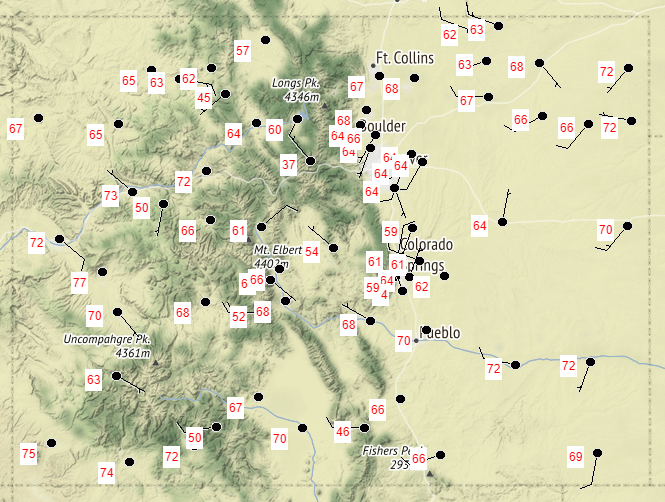Issue Date: Friday, September 24th, 2021
Issue Time: 10:15 AM MDT
Summary:
Thursday started out overall uneventfully, with temperatures creeping back up just above seasonal normal across the state. By afternoon however, a weak but fast-moving cold-frontal passage made its away from north to south across the state. This helped to kick off isolated evening showers, including snow, in the high elevations of the Northern, Central, San Juan, and Front Range Mountains. Several SNOTEL stations scattered across the high elevations picked up 0.1 inches of liquid equivalent precipitation. For the rest of Colorado, dry weather prevailed. As expected, no flooding was reported on Thursday. For rainfall estimates (or lack thereof) in your area, check out the State Precipitation Map at the bottom of today’s post. Note: a small area of precipitation appears to be over the Lincoln-Kit Carson-Cheyenne county area. This is actually a radar artifact from a large wind farm, rather than precipitation.
Every year, SmokyMountains.com produces a fall foliage map highlighting which week peak fall colors will occur across the county. The wet spring and warm summer delayed peak fall foliage a bit across Colorado, but it has arrived for the northwest portion of the state. The slider map found here can help decide when to head out and where for the best leaf peeping!
It's the best time of the year! #cowx pic.twitter.com/rl9sCjDh7V
— Kylie Bearse (@KylieBearseWX) September 24, 2021
Click Here For Map Overview





